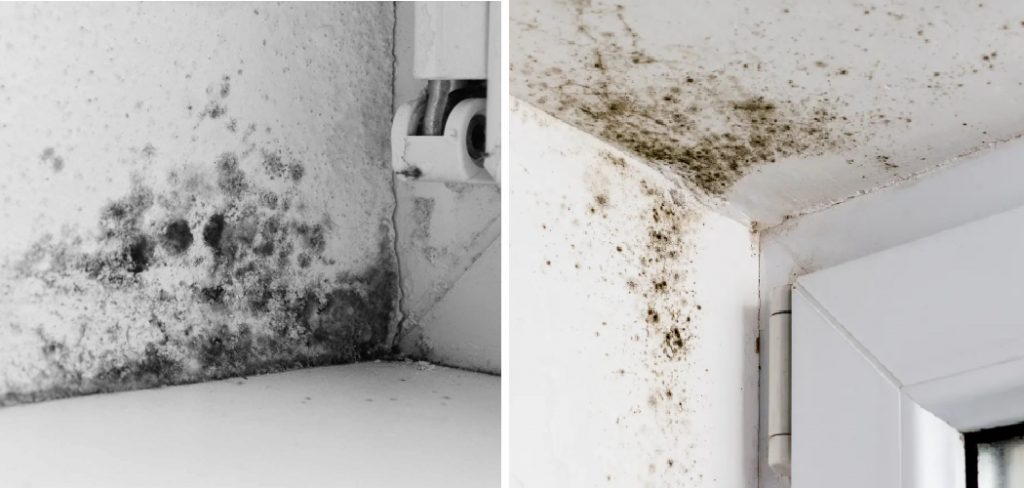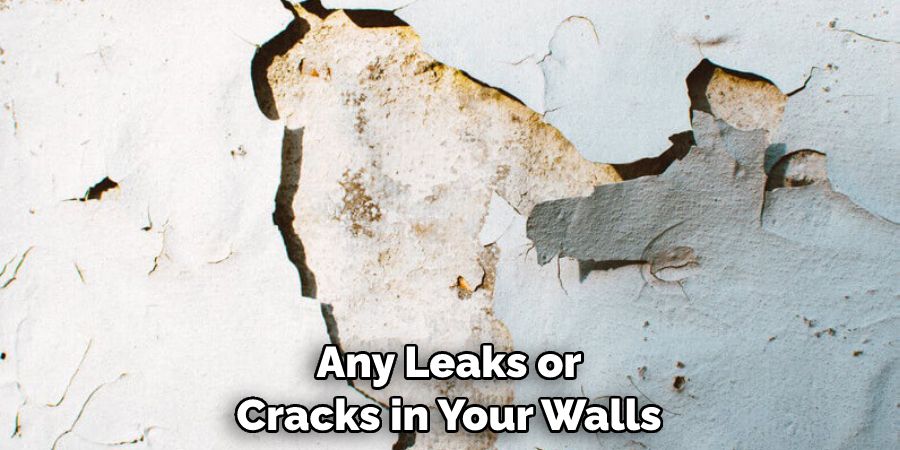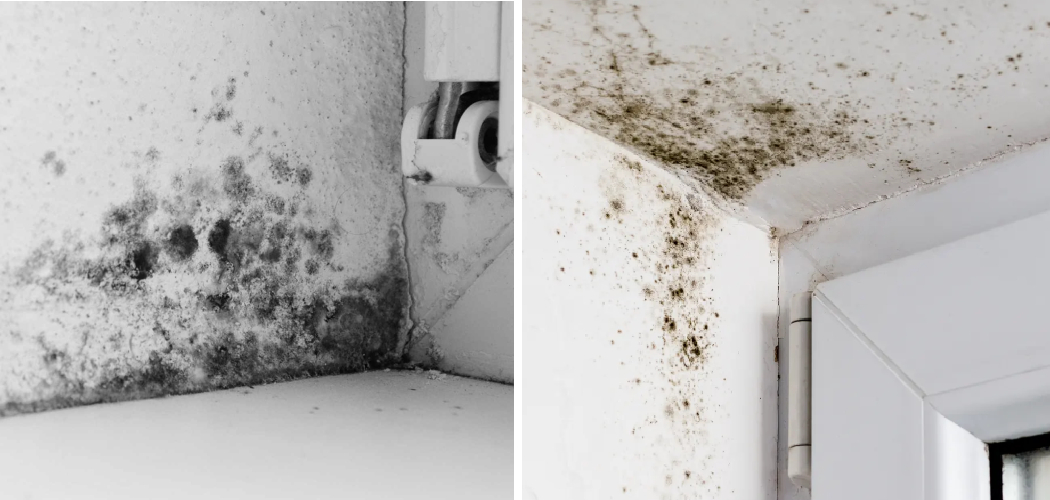Are you tired of the dreaded mold creeping into your bedroom in winter? Is it growing on walls, in corners, and taking up residence all around your room? If so, you are not alone—many people struggle to keep their bedrooms free from mould during this time of year.

This is a common problem, especially in colder climates – but worry not! You can do many things to prevent mould from taking over and ruining your beautiful craft projects.
In this blog post, we’ll explore how to stop mould in bedroom in winter from infiltrating your space while bringing a cozy craft element (think holiday ornaments!) into the mix. We’ll look at how to identify where mould is coming from as well as actionable steps you can take right away to reduce or completely eliminate the problem for good. Ready to get started? Let’s go!
What Will You Need?
In order to tackle this problem, you will need a few basic items:
- A fan or dehumidifier
- Windows and door seals (if needed)
- Ventilation in the room
- Mold-resistant paint
Once you have these items, you’ll be able to take the necessary steps to reduce the amount of moisture in your bedroom and keep it free from mould.
10 Easy Steps on How to Stop Mould in Bedroom in Winter
Step 1. Locate the Source of the Mould:
Mould needs a damp environment to grow, so start by finding the source of the moisture. Look for any leaks or cracks in your walls that could be letting in damp air from outside. Check around windows and doors, too, as these can often be a source of unwanted moisture.

Step 2. Ventilate the Room:
Ventilation is key to preventing mould growth. Open windows when you can and install ventilation fans if needed – this will help reduce humidity levels and keep the room dry. As an added bonus, it will also improve air quality and help reduce allergens in the room.
Step 3. Install Window and Door Seals:
If your windows or doors are not properly sealed, cold air from outside could enter your bedroom and create condensation on the walls, which leads to mold growth. Ensure all gaps between window frames, doorways, and floors are properly sealed with weatherstripping or caulk so that cold air stays out!
Step 4. Invest in a Dehumidifier/ Fan:
These devices will help reduce air moisture levels and prevent mould from forming. Make sure you place them in areas of the room where mould is most likely to form, such as in corners or near windows. Be careful not to block any vents or airways when setting up your dehumidifier/ fan.
Step 5. Clean Regularly:
Regular cleaning will help keep your bedroom free from dust and other particles that can encourage mould growth. Wipe down walls, furniture, and floors with a damp cloth on a weekly basis to ensure everything stays clean and dry. Drying the surfaces completely after cleaning is important, as any residual moisture can lead to mold.

Step 6. Repair Leaks Quickly:
Identify any water leaks in your home and repair them as soon as possible – this will help prevent further mould growth. Don’t forget to check pipes, gutters, and roof tiles for any signs of damage. If you can’t repair the issue yourself, call in a professional to help.
Step 7. Cover Your Mattress:
Invest in a breathable mattress cover, as this will help keep your bed dry and mould-free during winter months. Try to keep the mattress and sheets clean and free from moisture, too – this will help reduce mould growth. Ensure your bedding is aired out regularly to help keep the room free from allergens and bad odors.
Step 8. Use Mold-Resistant Paint:
If you are planning on painting your walls, use mold-resistant paint to reduce the risk of moisture buildup and mold growth inside your bedroom. Various types of paint are available, so make sure you choose the one best suited for your needs. Don’t forget to prime the walls before painting, as this will help create a barrier between the wall and the paint, preventing mould from forming.

Step 9. Reduce Clutter:
Keep clutter to a minimum in your bedroom so that air can flow freely throughout the room and reduce the chances of condensation forming on surfaces – which is one of the main causes of mould growth. Moreover, dust and dirt can accumulate in cluttered areas, further encouraging mould growth.
Step 10. Get an Air Purifier:
Air purifiers help remove allergens and other particles from the air that can contribute to mould growth. Placing one in your bedroom and running it frequently will help keep the room clean and free from mould. Remember to replace the filter regularly according to the manufacturer’s instructions.
Following these steps should help you to reduce or prevent mould growth in your bedroom during the winter months. If all else fails, however, call a professional who specializes in mould removal, as they have the necessary tools and experience needed to get rid of any unwanted fungi quickly and safely.
5 Additional Tips and Tricks
- Avoid moisture in the bedroom by using a humidifier and ensuring that it is regularly maintained.
- Make sure to keep all windows closed during winter and check for any drafts that might let cold air in.
- Consider adding an exhaust fan or two to the bedroom, which will help get rid of moist air quickly and prevent mould from settling on surfaces.
- Ensure that furniture is not up against exterior walls, as this can trap moisture during winter months when temperatures may drop significantly overnight.
- Clean regularly with a damp cloth; mould spores can spread fast if left unchecked, so it’s important to keep on top of your cleaning routine! This includes wiping down surfaces such as window sills and skirting boards where mould is likely to settle.
By following these simple tips, you should be able to stop mould growth in your bedroom during the winter months and keep your home healthy!
6 Things You Should Avoid
- Don’t store wet clothes or towels in the bedroom, as this will increase humidity and create the perfect environment for mould growth.
- Don’t forget to ventilate! Make sure to open windows daily, even if it is just for a few minutes, so fresh air can circulate in the room.
- Avoid using strong cleaning products such as bleach when cleaning surfaces; although they may help kill mold spores, these chemicals can also be very harmful to humans and pets!
- Don’t place furniture directly against exterior walls, as this may trap moisture and create an ideal setting for mould to grow.
- Lastly, don’t ignore any signs of mold; it’s important to address the issue as soon as possible to prevent the problem from worsening.
- Don’t forget to inspect the bedroom regularly for any signs of mould growth and address the
the problem as soon as possible.
By avoiding these common mistakes, you can help stop mould growth in your bedroom and keep your home healthy!
Is It Safe to Sleep in a Bedroom With Mould?
In short, no. Even if you’re taking all the necessary steps to stop mould growth, it’s not recommended to sleep in a bedroom with mold present. Mold spores can cause respiratory problems and other health issues when inhaled or ingested—so it’s best to keep your bedroom free from any moldy surfaces and furniture.

If you suspect that there is mold in your bedroom, it is important to take action quickly. Clean up any visible mold using non-toxic cleaning products and try to identify what may have caused it. Once you have done this, make sure to take the necessary steps outlined above to prevent further growth!
By implementing these tips, you should be able to keep your bedroom free from mould and ensure you have a safe and healthy environment.
Conclusion
In conclusion, when it comes how to stop mould in bedroom in winter, the best approach is to do whatever you can to reduce moisture and humidity. This includes installing a dehumidifier in the room and investing in proper ventilation. You might even consider adding a bit of color and life to the space with a few house plants; they are stylish and beautiful and help absorb excess moisture, although make sure that the potting soil has been properly dried beforehand.
Don’t forget to check back on a regular basis for any signs of mold growth and clean up any water spills as soon as they happen. As mold is incredibly difficult to treat once it takes hold, these steps will protect you against future mildew problems. Finally, why not add a few decorative touches – from candles, scented oils, or a special craft item – for good measure?
By taking these proactive steps, you can ensure that your bedroom stays free from mildew and dampness throughout winter. Thanks for reading!
